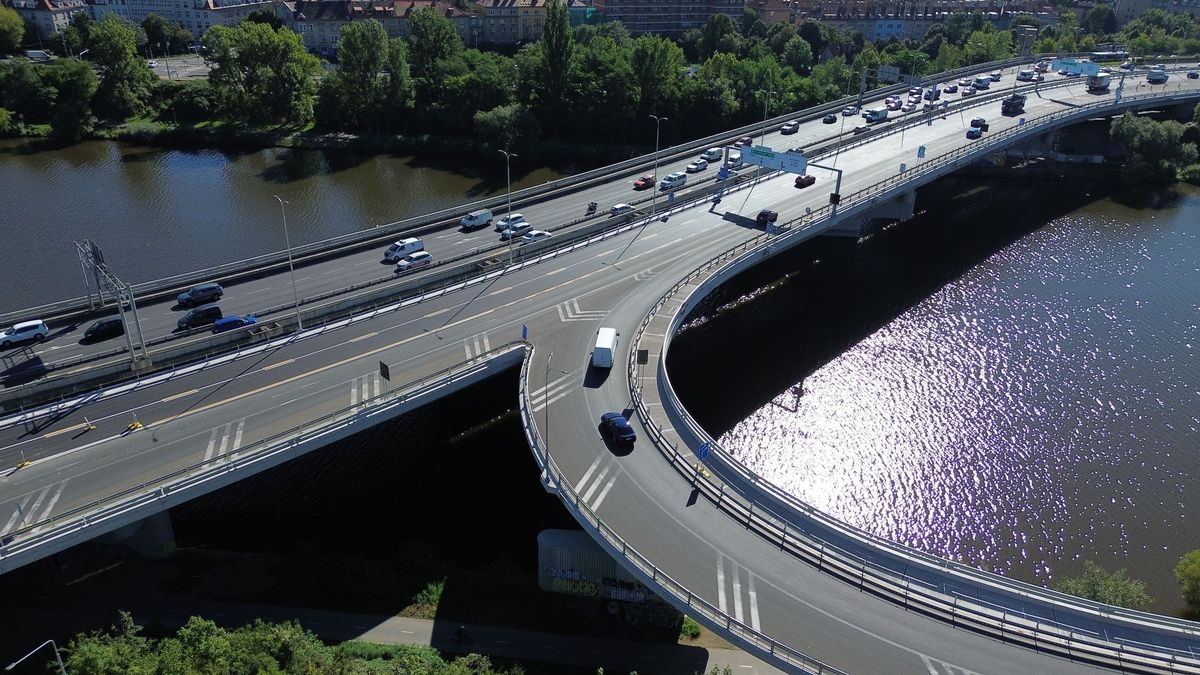According to Hřib and Peterka, the aim of closing the ramp from Strakonická is to simplify traffic on the bridge by reducing one of the possible approaches to it. At the same time, the number of cars directly on the bridge will be reduced. The Barrandovský bridge consists of two bridges, namely the southern one, over which cars travel in the direction from Smíchov to Braník, and the northern one, over which cars travel in the opposite direction. Part of the bridge in the direction from Smíchov to Braník was repaired by road workers last year and the year before. The bridge from 1983 is crossed by 140,000 cars daily, which makes it the busiest bridge in the Czech Republic.
“The repair will significantly affect traffic in Prague, we won’t lie to ourselves, even though it is very well prepared. The most critical phase is the initial phase, the first few days before the drivers get used to it,” said Hřib. At the same time, he called on drivers to be considerate, and if they don’t have to, to avoid the bridge.
On average, 13,000 cars arrive on the ramp from Strakonická per day, while 22,000 vehicles arrive from Barrandovo. In the event that cars from Strakonická, Smíchov and Barrandov drive onto the bridge, and at the same time the number of lanes on the bridge is reduced, cars will not fit on it, according to TSK.
“In the models, we focused on comparing variants, and the results came out clearly for the closure of the ramp from Strakonická, when we are able to serve the 13,000 vehicles via the return ramp to Lihovar and detour routes along the Prague ring road,” said Peterka.
According to him, closing the ramp will also contribute to higher safety on the bridge. Cars from Strakonická will not have to connect at the beginning of the bridge together with cars from Smíchov and Barrandov, but will join the flow of cars from the north already at Lihovar.

Photo: TSK Praha
This year’s repairs to the Barrandovské bridge will begin in March with the closure of the approach ramp from Strakonická.
On the bridge itself, drivers will travel in three instead of four lanes in each direction, just like in previous phases of repairs. In the direction from the South junction, cars in the left lane will cross in the opposite direction. One lane in the so-called mouse hole, which drivers drive towards Barrandov and Strakonice, will also be closed in this year’s first phase.
TSK does not yet have a complete and exact scenario for changing the markings, however, according to deputy director Jiří Hájek, it will happen at night, and problems on the bridge should not arise. TSK originally expected the repairs to be completed next year, but announced last week that it had combined the remaining works scheduled for 2024 and 2025 into one year. The transition from the original third to the fourth phase of repairs is planned for the beginning of June.
During the repair period, tow trucks will be ready at both ends of the bridge in case of an accident. One spreader will also be available due to possible weather changes. TSK has already developed changes to the traffic light system in critical locations around the repair, and in the case of public transport, tram line number 21 will be strengthened. Buses number 125 and 170 are also awaiting changes.



